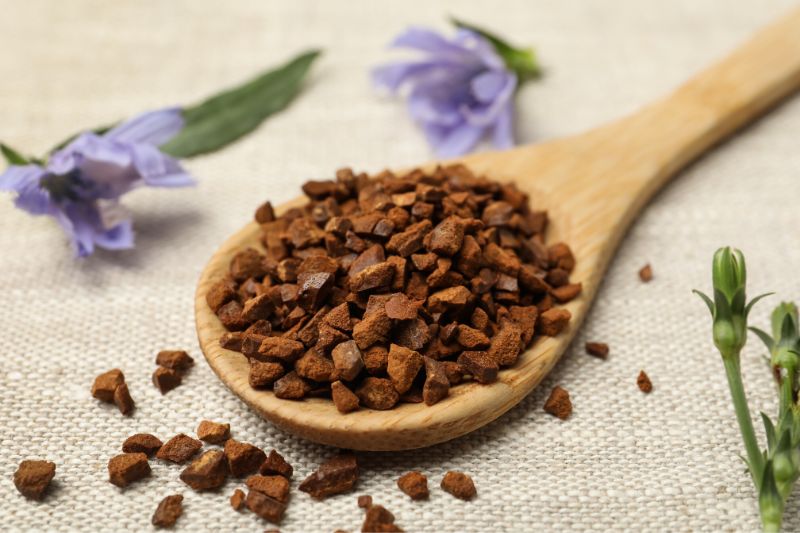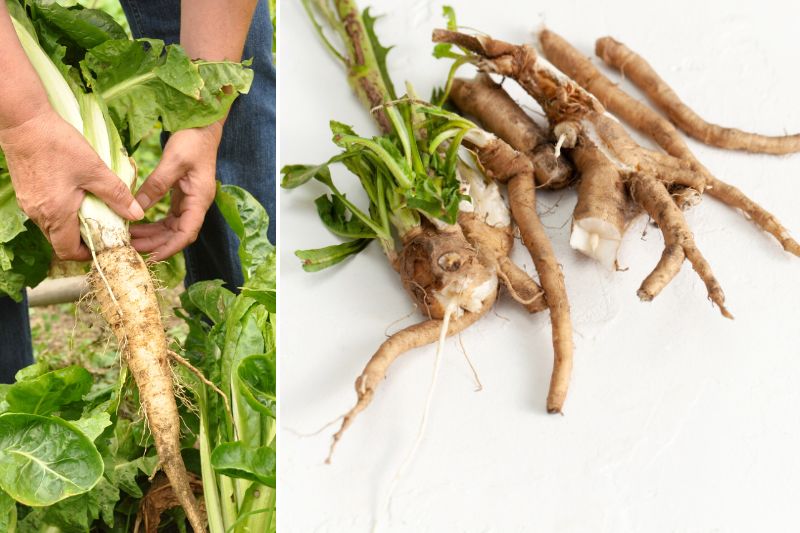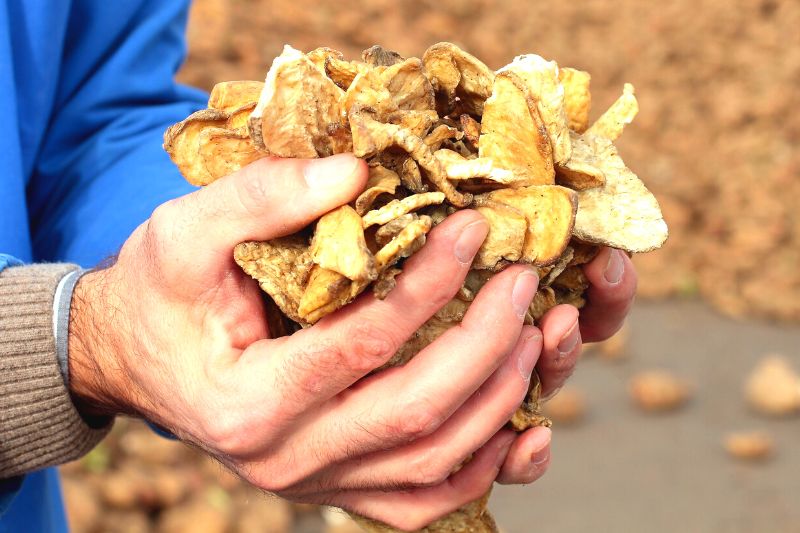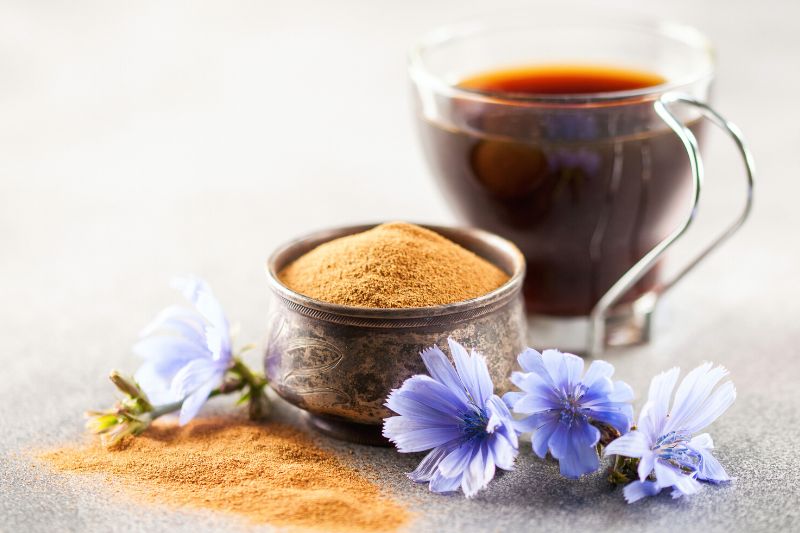Native to southern Europe and known since antiquity, chicory is cultivated for its foliage and root. There are indeed a multitude of wild or cultivated species, each with a certain bitterness. The famous bitter drink comes from Wild Chicory (Cichorium intybus), also called "true endive". Very popular in northern France, it long served as a coffee substitute or blends with it for a flavourful touch. Somewhat neglected for a few decades, this perennial plant is now making a comeback for its multiple benefits. What if we grew our own chicory in the garden? Discover when and how to make your own chicory.

How to grow chicory?
When to sow chicory?
Wild chicory is sown from March to May depending on the region, once the risk of frost has passed. Also called "true endive", it requires daytime temperatures between 15 to 20°C to germinate.
How to sow chicory?
1- Carefully weed your soil and remove any stones from this small plot.
2- Work and loosen your soil to a depth of 30 cm using a aerating fork or a hand fork.
3- If your soil isn't very rich, add some compost or well-rotted manure.
4- Using a hoe or the back of a rake, make small furrows barely half a centimetre deep.
5- Water the soil generously
6- Plant the seeds spaced apart, then cover with a thin layer of sieved soil or some potting compost.
7- Water again with a fine-rose watering can to prevent the seeds from scattering.
8- Keep the soil moist until germination, about 3 to 5 days later.
9- When the young plants are a few weeks old and form a small rosette, thin them out to keep one plant every 30 to 40 cm.
Note: Chicory has a taproot and doesn't appreciate transplanting. Sowing should therefore be done directly in the ground.

The blue flowers of wild chicory
When to harvest chicory?
The roots are dug up in autumn, between October and November, at the time of the first frosts. Brush and wash them immediately after harvesting.

Wild chicory roots (left: industrial cultivation, right: garden cultivation)
How to make your own chicory?
- Once your chicory roots are cleaned of soil, slice them thinly, barely two or three millimetres thick, no more. This will produce "cossettes". Note: If your roots are very thin, slice them lengthwise instead.
- Then dry your cossettes in the open air, placing them on a rack or clean cloth. The drying or dehydration of cossettes is done in the open air. Turn them occasionally for 2 weeks.

Dried chicory cossettes
- If you prefer roasted chicory, place the cossettes on a baking tray and cook at 150°C until they turn caramel colour. Check frequently to prevent burning.
- You can then grind your chicory to obtain a powder or finer grains.
Roasted or unroasted chicory?
Roasting has the advantage of giving a milder taste, with caramel and hazelnut flavours, and making the drink from chicory root less bitter. A great coffee alternative! Without the caffeine! However, this cooking process alters some of the plant's properties, particularly inulin which transforms into fructose under oven heat. It's this fructose that caramelises, hence its sweeter, milder taste.
When to drink chicory?
In France, particularly in the north and in Belgium, chicory traditionally replaces or blends with coffee in the morning, at noon or in the evening. It seems to counteract coffee's adverse effects on the stomach and contains no caffeine. It can also be mixed with milk.
Put 1 to 2 teaspoons of your chicory in a tea strainer, then pour 250ml of boiling water. Steep for 5 minutes. Enjoy.
Did you know?
Chicory is also used in cooking for preparing sauces, marinades or to add flavour to meats during cooking. It's also found in pastry-making, for chocolates and desserts.

Chicory powder flavours or replaces coffee
What are the benefits of chicory?
The virtues of chicory
Before modern medicine, chicory was traditionally used for its detoxifying and liver-tonic properties, stimulating bile functions. It also appears to have diuretic effects, improving digestion, particularly for constipation, and may help with skin problems. It's apparently rich in minerals.
Precautions
As it stimulates bile ducts, chicory should be avoided in cases of liver disease. The same applies if you're prone to allergies from the Asteraceae family. If experiencing bloating, opt for roasted chicory.



































Comments